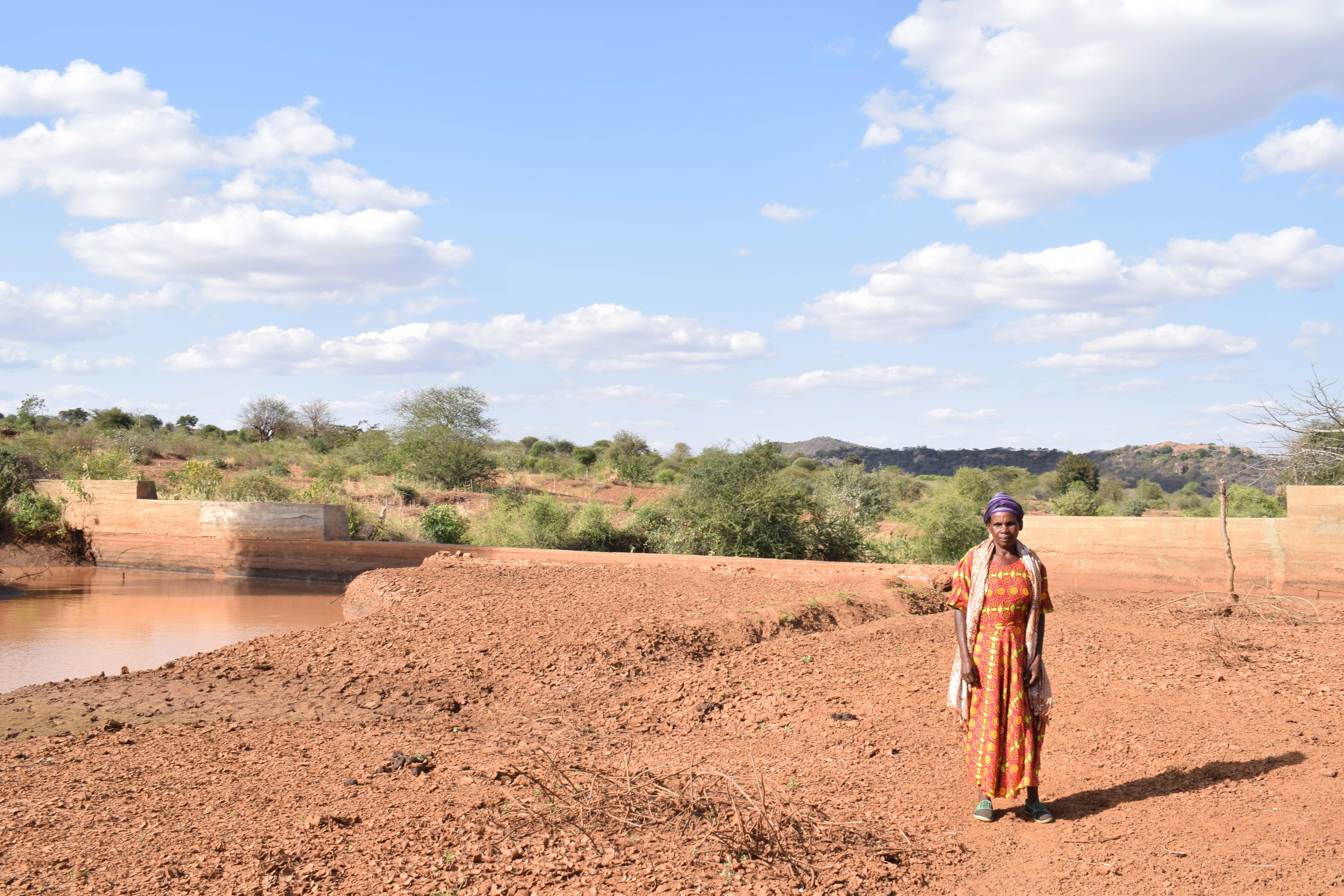This project is a part of our shared program with Africa Sand Dam Foundation. Our team is pleased to directly share the below report (edited for clarity, as needed).
Welcome to the Community
Kyeni kya Karuli Self-Help Group was formed in the year 1978. The purpose of the group was to tackle food insecurity and water shortage through the area of both resources. There was a major famine and drought at that time that caused a huge loss of livestock. The massive losses pushed many into poverty.
The members of this group mean to support each other in every way possible. Soon after its start, in 1983 the group was able to finish its first sand dam. However, because of weak structural design, the dam collapsed under the heavy storm rains of 1997. During the years between 1983 and 1997, the group's sand dam made water more accessible to farmers, and in turn provided more food. With its loss, food and water shortage threatened families once again.
This area is home to 436 people who will all benefit from a new sand dam.
Water Situation
No sand dam forces families to walk long distances in search of water. The closest source is a borehole three kilometers from the village. However, water at the borehole is sold at a fee of five shillings per 20-liter jerrycan, and not many community members can afford that price. The water from that borehole isn't even reliable; sometimes a person will make the long trek only to find out that the pump is locked. The alternative for those who don't want to pay is to dig a hole to access the water from the seasonal river.
The river scoop holes are separated between animals and humans. A farmer will bring his livestock to a different area to keep them away from scoop holes intended for human consumption. Moreover, these scoop holes set aside for human consumption are hedged with thorny bushes to keep animals away. As the seasons get drier, the community must dig these holes deeper. July through October, these scoop holes are at their deepest, and are actually very dangerous for small children to be around.
20-liter jerrycans are used to fetch the water and once home, dumped into larger containers varying in size from 200-400 liters. Water for drinking is kept inside and covered, and water for chores is left outside in the open.
A daily average of five hours is spent on fetching water, forcing these farmers to sacrifice time tending to their crops and animals. Ultimately, these farmers are sacrificing economic development just to get enough water.
Sanitation Situation
Over 75% of homes have pit latrines, but they are made with mud, the pits are shallow, and most have no doors for privacy. We noticed that because of these poor bathroom conditions, open defecation is an issue.
A few of the homes had hand-washing stations, and no more than half of homes had dish racks and clotheslines to dry things off the ground. Garbage is separated between a compost pile and a burn pile.
The community has a misperception that good sanitation and hygiene is only for the rich who have the money to build expensive toilets and tools. Many believe that since they are so impoverished, the government should step in and help. This idea is so strong that the community has been making little to no effort to establish good habits.
Plans: Hygiene and Sanitation Training
To address the concerns above, hygiene and sanitation training will be offered to self-help group members on two consecutive days. Once the members have learned about useful practices and tools to improve health, they will be able to share with their families and neighbors. Since open defecation is an issue, an emphasis will be placed on proper latrine construction and use.
Plans: Sand Dam
This sand dam will be one of many construction projects to come in the next few years. We will spend a total of five years unified with this community to address the water shortage. More sand dams will be built to transform the environment. As the sand dam matures and builds up more sand, the water table will rise. The sand collected behind the dam will also create a natural water filter. With good water available, plants and people in the area will thrive. Along with these sand dams, hand-dug wells will be installed to give locals a good, safe way to access that water.
We worked with the community to find the best location for all. They picked a location central to most households, and we verified the stability of bedrock at that part of the river. This sand dam will be an estimated 54.7 meters long and 4.6 meters high. We visited farmer Jeniffer Wanza who told us about the water shortage in her community. You can find pictures of Jeniffer and her home under the "See Photos & Video" tab. She told us, "The challenge of this community is lack of adequate water. We are willing to build a sand dam because no other water source has served us more than the previous sand dam. With water from the sand dams, we will not struggle and waste time like we are currently doing."

 Sand Dam
Sand Dam
 Rehabilitation Project
Rehabilitation Project






























